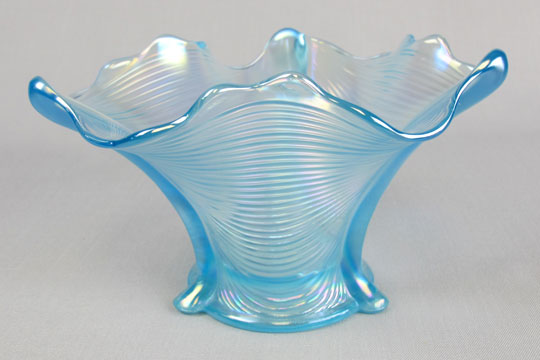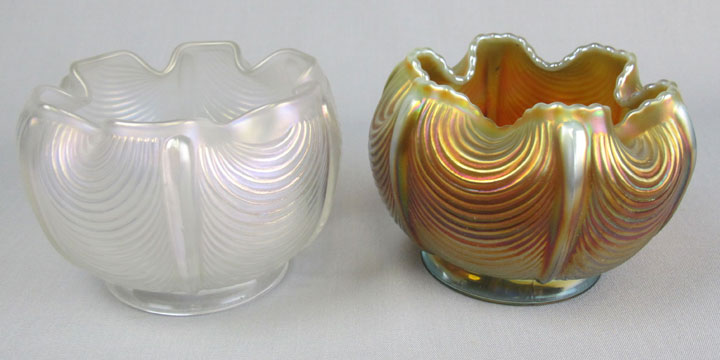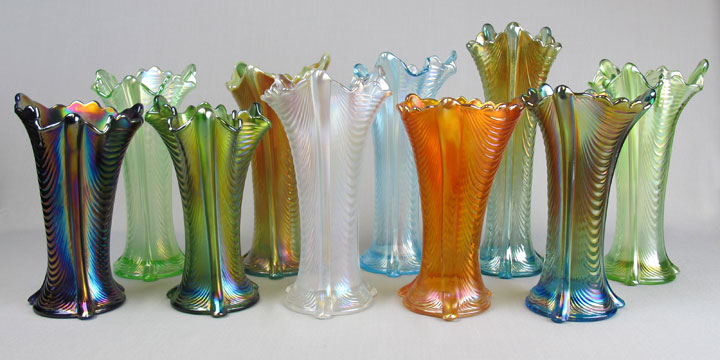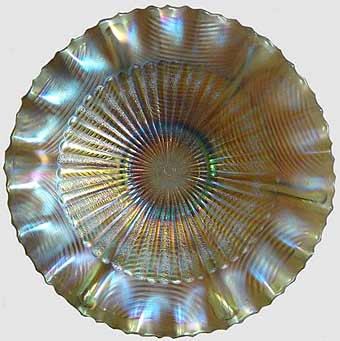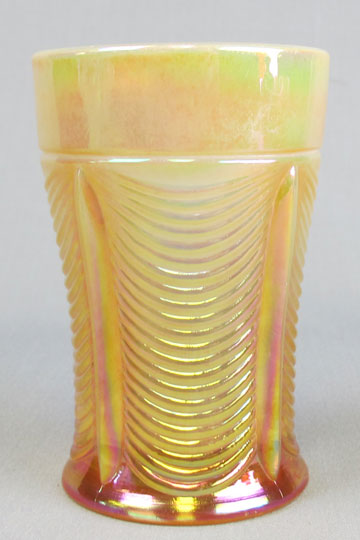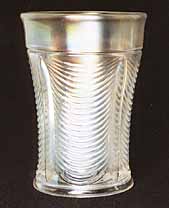| Drapery vases are available in a range of colors and are made from the same mould as the candy dish above. Colors shown above, from left to right, are blue, ice green, green, aqua opal, white, ice blue, marigold, aqua, sapphire and lime green. Amethsyt and light blue opal are also known.
In the photo to the right are a Drapery variant vase (without the small toes) and a Drapery footed variant (sometimes called the variant variant). Unlike the regular vase with three vertical ribs and toes, the footed variant has four ribs and toes. Both the variant and footed variant are seen much less often than the regular vase. |
